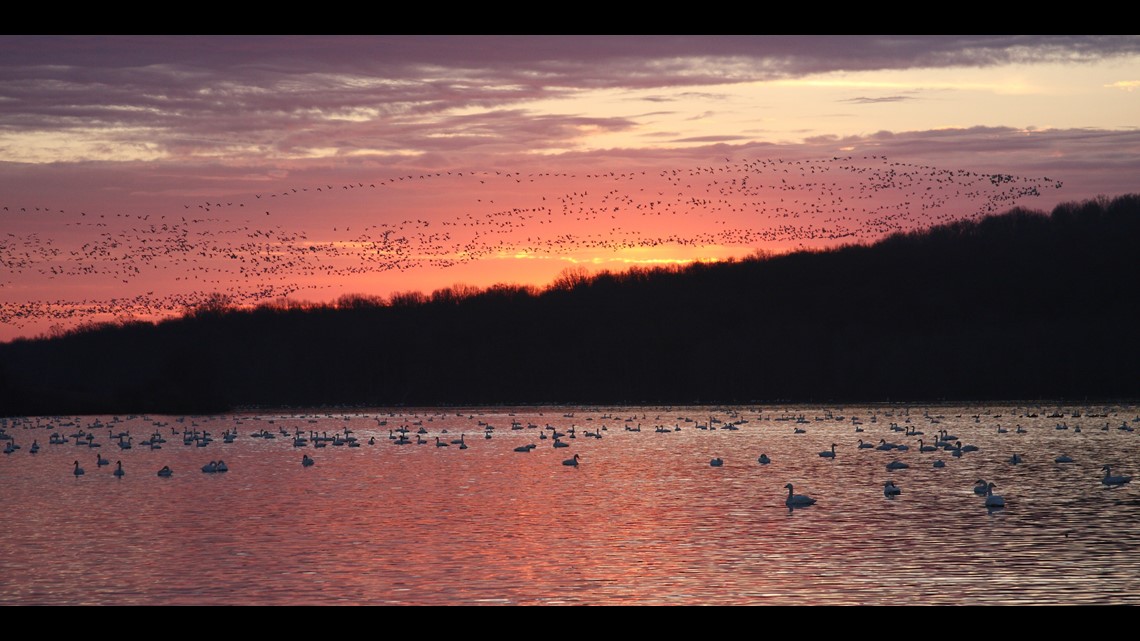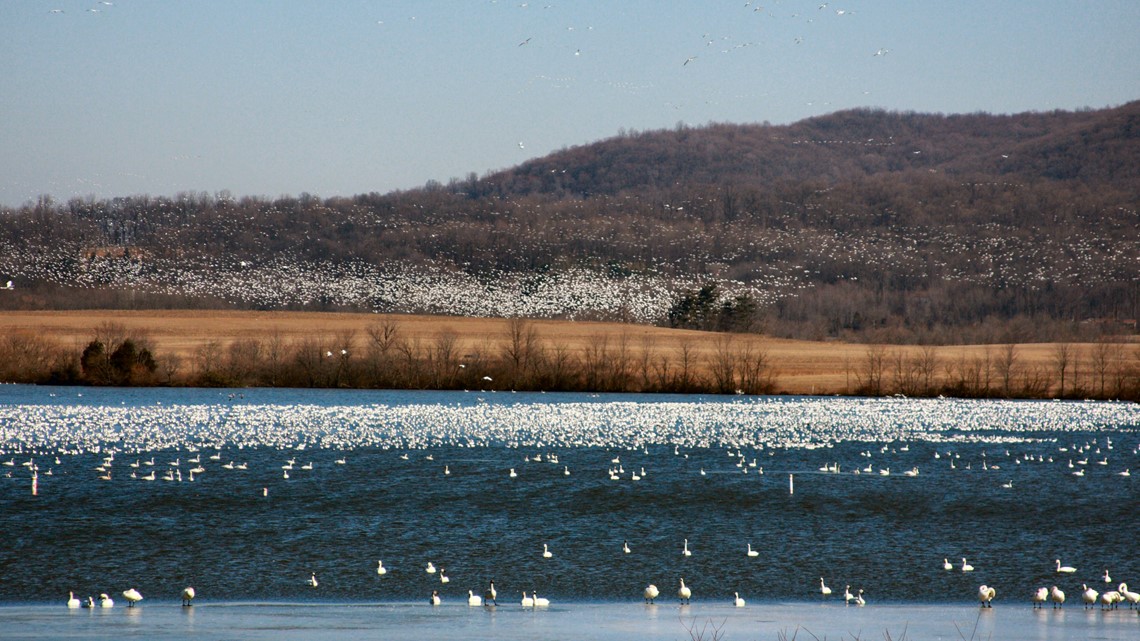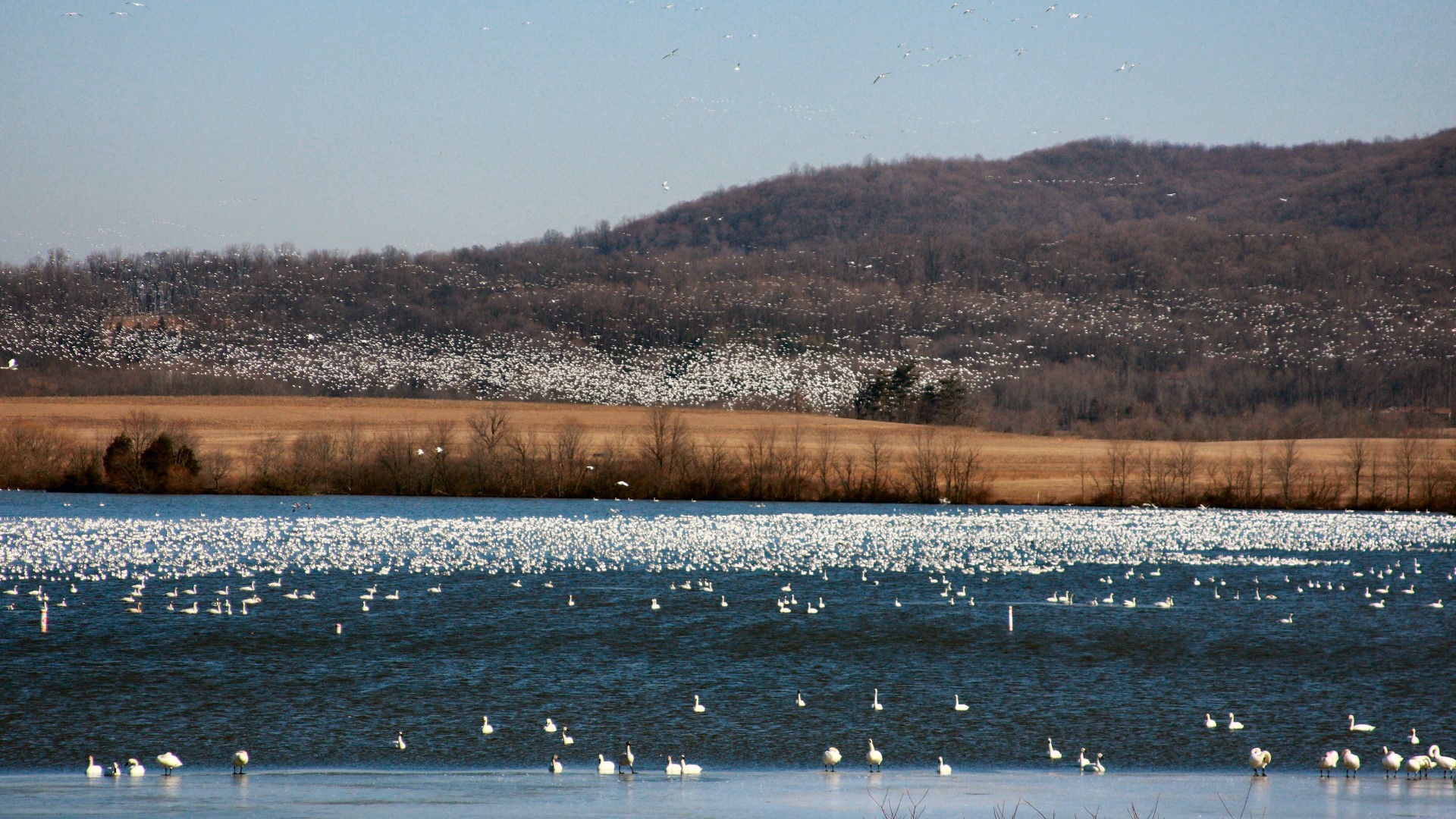STEVENS, Pa. — Every year, hundreds of thousands of snow geese use Middle Creek Wildlife Management Area as a rest stop as they migrate back north to their breeding grounds.
Joe Monfort, an Environmental Education Specialist at Middle Creek explains, “They use it as a stopover destination to refuel, hang out on the lake for a bit, go into the agricultural fields nearby, feed, stock up on those calories because they have several thousand miles ahead of them after they leave Middle Creek.”
These geese can spend up to 12 hours a day feeding in the open fields so that they have the energy to complete their three to four-thousand-mile migration path back north to the Arctic.
Ironically though, the bird with the word “snow” in its name doesn’t like the cold or the snow.
Monfort says, “So sometimes if you’re coming to Middle Creek and the lake is frozen or there’s a lot of snow on the agricultural field, these guys won’t even land. They’ll just keep heading north and look for greener pastures and greener fields and unfrozen bodies of water to hang out on.”


Through the winter months, snow geese are found off the coast of the Mid-Atlantic, they’re typically hanging out in coastal bays and estuaries.
“They’re a little bit like other snowbirds that might go down to Florida with their RVs in the winter and then come back up, so they’re just taking advantage of weather, habitat, food, and spending time in two different locations, Monfort says.
While Middle Creek is already seeing thousands of these birds each day, we are nowhere near the peak just yet.
Monfort explains, “You know it’s a little bit like a bell-curve, because there are some outliers that start really early and then most of them are concentrated right in the middle and then you kind of have the stragglers. You have some geese that maybe were enjoying the southern winters too much and didn’t want to get going as early as the rest of them.”


The most impressive flocks are expected to arrive mid to late February.
Middle Creek updates the number of birds they’re seeing daily and has a live stream available so that you can watch nature’s beauty from your home. Click here to watch.
For the latest migration from Middle Creek Wildlife Management Area update click here.

